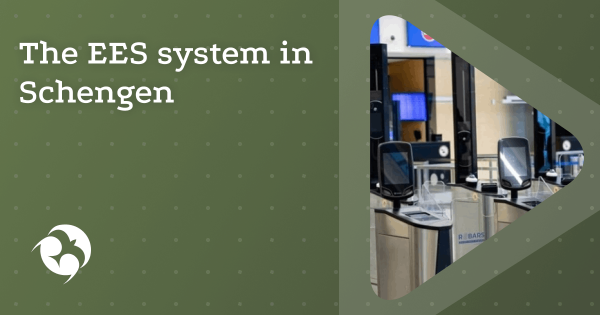The European Union has officially announced the launch date of the Entry/Exit System (EES) – October 12, 2025. Passport stamping will no longer be required. Biometrics will now be mandatory for all citizens of most countries, including Russians.
This refers to the full-scale digitalization of border control at the Schengen borders. The system operates on the basis of Regulation (EU) 2017/2226 of the European Parliament and of the Council of 30 November 2017. The transition period will last 180 days, with full implementation expected to be completed on April 10, 2026.
How the new system works
Upon first entry after the launch of the EES, travelers will be directed to special registration points. The procedure includes facial scanning and four fingerprints – this requirement applies to everyone over 12 years of age. Younger children are exempt from submitting biometrics.
The EES database includes the following information:
- Personal data from the passport;
- Biometrics;
- Date, time, and place of border crossing;
- Entry refusals.
Who will be affected by the EES?
The new rules apply to citizens of all countries outside the EU, EEA, and Switzerland. This applies to both Schengen visa holders and visa-free travelers. Exempt from mandatory biometrics:
- Holders of long-term D visas;
- Holders of residence permits in EU countries;
- Citizens of the EU, EEA, and Andorra, Monaco, San Marino, and the Vatican.
- Automatic monitoring of length of stay
The EES system will monitor compliance with the 90/180 rule—a stay of no more than 90 days within any 180-day period. This length of stay is considered uniform for all countries participating in the system. Violators of the visa regime are automatically recorded.
Experts warn of possible delays in the first months of the system’s operation. According to tourism industry experts, travelers may encounter queues of 2-4 hours during peak periods. Analysts recommend planning to arrive at the airport 2-3 hours earlier than usual during the transition period. Potential system failures are expected at 15-20% of border crossing points initially.
The system will not be implemented everywhere initially. Implementation will begin with major international airports in Germany, Estonia, and Luxembourg. Gradually, the system will cover all border crossing points, including seaports, land, and rail crossings. Until the end of the transition period, passport stamps will be affixed manually in parallel with digital registration.
Officially, both biometric and non-biometric passports will be accepted for entry into the Schengen area. However, in reality, the number of jurisdictions that do not recognize the old Russian passports (five-year validity) continues to grow.

Поможем в подборе лучшей программы ВНЖ,
расскажем о подводных камнях,
ответим на ваши вопросы
How our specialists can help you prepare for the new rules
Changes in EU regulations create additional risks for travelers. Our team of immigration lawyers specializes in assisting with visa and residence permit applications in countries around the world. We are ready to help you understand the intricacies of immigration systems, prepare the necessary documents, and avoid mistakes that could lead to entry denial.
Submit a consultation request and receive professional assistance tailored to your situation.












